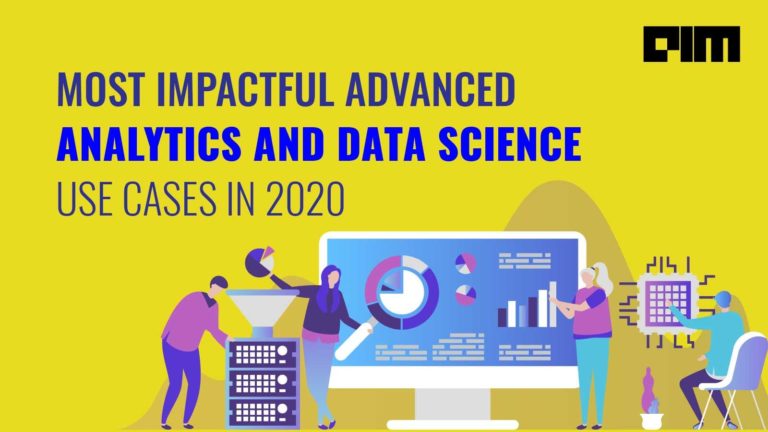In today’s challenging business environment, it is imperative that organisations across industries take forward-looking decisions in near real-time. Decisions can no longer be made based on gut feel or hunches. The key to success rests in encouraging a culture of data-driven decision making. However, most organisations are overwhelmed with data which arises from every interaction, transaction, process, and channel. While most organisations look at big data as a challenge, predictive analytics has the potential to enable organisations in transforming data into foresights. Predictive analytics can empower businesses to take fact-based decisions, enhance customer engagement, manage risk, curb fraud and attain breakthrough business outcomes.
Predictive analytics is a blend of tools and techniques that enables organisations to identify patterns in data that can be used to make predictions of future outcomes. Apart from enabling businesses to derive foresights and take forward-looking decisions, predictive models unveil and measure patterns to identify risks and opportunities using transactional, demographic, web-based, historical, text, sensor, and unstructured data. Analysts foresee that, by 2016 nearly seventy percent of high-performing companies will manage their business processes using real-time predictive analytics.
Predictive analytics has its applications across multiple industries and business functions.
Banking & Financial Services:
Organisations in the financial sector, run the risk of a default in payment or repayment. They use techniques such as credit scoring to minimise such risks. Predictive analytics adds a forward-looking perspective to existing processes. Customers’ data can be picked from different sources and his/her transaction pattern can be analysed in order to predict the propensity to default even before the payment is delayed. This can help mitigate one of the major risk which the industry is facing. Additionally, Banking & Financial Services organisations face frauds at different levels. From stolen credit card purchases, money laundering, first-party fraud, insurance claims, etc., fraud is increasing costs for businesses and consumers alike. Predictive analytics complements an organisation’s existing transaction monitoring systems and business rules methodology, by tracking frauds at an early stage and raising red flags. With predictive analytics, organisations can track tomorrow’s fraud today and be proactive in terms of managing potential threats.
Manufacturing:
Today, consumers are more empowered than ever before. They demand better quality, lower prices, and faster delivery. Product specifications and costs are no longer a differentiator. It is important to create a delightfully differentiated experience at each stage of customer lifecycle. Predictive analytics plays a vital role in customer segmentation, loyalty management, manufacturing planning, warranty analysis, supply chain intelligence, etc. With predictive analytics, organisations in the manufacturing industry can forecast the propensity of a prospect to purchase, the degree to which a customer would be receptive to certain offers, analyse his/her group behaviour with respect to their social affinity and so on. They can also plan operations and logistics, based on the demand which they foresee for a particular type of product in the given region.
Utilities:
One of the core drivers to plan for future is to identify previously unseen trends and anticipate fluctuations. Predictive analytics can help factor previous trends and combine them with other correlated factors in order to create a future plan. This helps organisations in being proactively prepared vis-à-vis demand and market trends. Organisations in the utilities segment are required to forecast demand and load respectively. In case of utilities, it is a regulatory requirement to submit accurate load forecasts at regular intervals of time. Many utilities across geographies leverage SAS’ analytics expertise to increase forecast accuracy and consistency.
Telecom:
Traditionally, marketers used to segment customers based on geography, demography, age-group, etc. This works well if you have a handful of customers however, telcos in India have millions of subscribers. In such a case, marketers need to adopt micro-segmentation where they can communicate with a customer based on his/her usage pattern, likings, channel preference, etc. With predictive analytics, organisations can create thousands of segments and run targeted campaigns, which can be communicated via a consumer’s preferred channel and at the right time.
Government:
Government offices across multiple departments focus on enhancing efficiency and delivering superior benefits to citizens. Predictive analytics finds its applications right from tax departments to state transportation to health departments and public security. Consider, for instance, tax departments deal with large volumes of transactional data. With predictive analytics, they can delve deep into this data to flag-off potential tax evasions, which can plug-in revenue leakages.
Small & Medium Enterprises:
Analytics is often perceived to be of value only for the large enterprises. This perception is rather untrue. Many emerging organisations leverage predictive analytics in order to forecast performance in the short and long term. They can recast performance across sales, staffing requirements, financial performance, marketing effectiveness, etc. For instance, an e-commerce company can forecast sales of a particular variant of product by a specific segment of customers. They can then run targeted offers for that segment of customers to further improve sales and at the same time, provide this feedback to the inventory teams and ensure elimination of stock-outs.
Predictive analytics finds its applications across many other industries such as pharmaceuticals, healthcare, oil & gas, etc. Data is emerging as a strategic asset for businesses and it is important to leverage this goldmine in order to attain business outcomes. With in-memory analytics and data visualisation techniques, organisations can uncover the true potential of their data and unleash meaningful insights about consumer preferences, growth drivers, business trends, financial performance, etc. Predictive analytics gives organisations the power to foresee and stay prepared for future challenges and opportunities.













































































